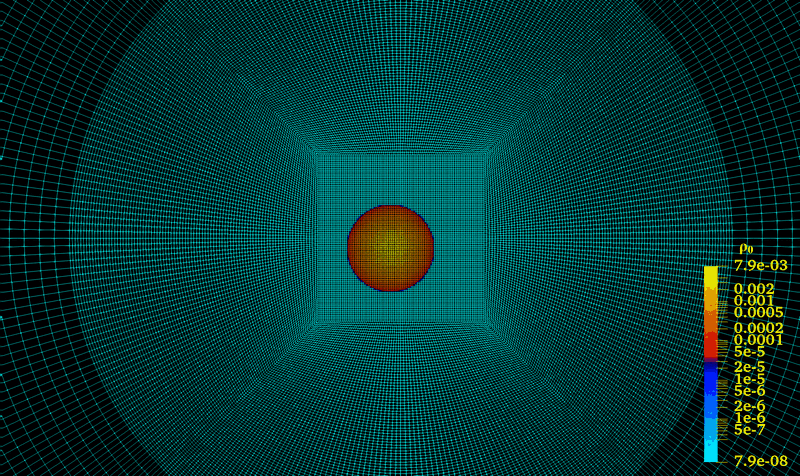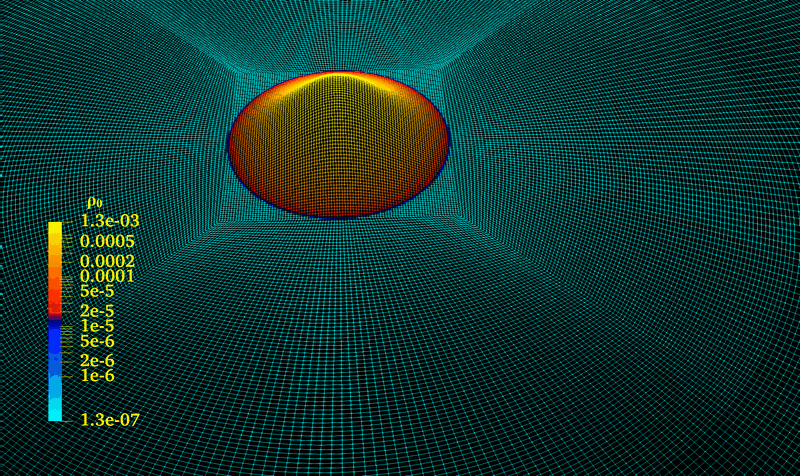Simulating neutron stars with Nmesh
The upcoming increasingly improved GW observatories demand simulations with higher accuracy produced at greater speed. Hence, a major current campaign in the numerical relativity community is to develop so-called “next-generation” programs that better utilize larger supercomputers and produce higher accuracy results. Nmesh has designs to be such a program, and a major part of my doctoral research focused on testing, optimizing, and developing the treatment of matter fields in Nmesh.

To achieve its goals of high scalability and accuracy, Nmesh utilizes the discontinuous Galerkin (DG) evolution sceheme in conjunction with the finite volume (FV) and finite difference (FD) schemes as necessary. My research focuses on optimizing the evolution of neutron stars (NSs) under this setup. Towards that goal, I first started with shock tube tests, as hydrodynamic schocks develop during the late phase of binary neutron star (BNS) inspirals. As any new program, Nmesh needs to be tested with for aqccuracy and robustness. Once this was achieved, I moved on to single NS simulations with four cases: (a) a stable single NS, (b) a perturbed single NS, (c) a highly dense unstable single NS that migrates towards a stable state, and (d) a boosted single NS.
Cases (a) tests for stability and robustness, while the rest of the cases explore Nmesh's ability to handle more dynamic behavior. Cases (a) and (b) were achived through pure DG, while a hybrid DG+FV scheme was necessary for cases (c) and (d), where we seitch to FV in certain regions basec on some list of criteria. The density behavior for these two later cases can be seen in Figures 1 and 2. Currently I am wroking on optimizing the criteria for selective switching between FV and DG. We have also started exploring BNS simulations.

Related publication: arXiv:2212.06340,
arXiv:2502.07204.
Related presentations: APS Global Summit 2025,
APS April 2024,
APS April 2023,
PCGM 2023,
APS April 2022,
APS April 2021.
Project personnel: W. Tichy, L. Ji, A. Adhikari, A. Rashti, A. poudel, M. Pirog.